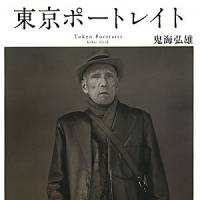The translated captions in Hiroh Kikai's highly original photo book "Tokyo Portraits" match the equally arresting images taken between 1973 and 2008. "A man who didn't have the money to buy a train ticket," reads one, "A man wearing shoes over his bare feet, who said he was doing academic research by himself," reads another.
Tokyo Portraits, by Hiroh Kikai
197 pages
CREVIS, Photo book.
In a portrait captioned "A man who said he'd just had a drunken quarrel," we see a defiant Tokyo senior whose battered face is caked with blood, one of his rubber boots missing, a toe protruding through a hole in his sock.
Coaxing strangers into having a serious portrait taken requires a special gift for persuasion, which Kikai clearly possesses. In his black-and-white portraits readers may see an affection for Tokyo's underclass. His subjects are largely blue-collar folk living in the less salubrious districts of the city, often sporting their own forms of clothing and tailoring. These distinctive inhabitants represent an assertive anti-beauty, a belief in alternative criteria for visual merit and credibility.
Whether the subject is a man wearing several layers of women's clothing, a woman panhandling for small change, or a fellow living contentedly with a crow, all peer squarely into the Kikai's lens with pride.
Ultimately, the images here are confirmation of an indefatigable individuality in the rundown quarters of the capital. These people may be down, but they are far from out.
Read archived reviews of Japanese classics at jtimes.jp/essential.



